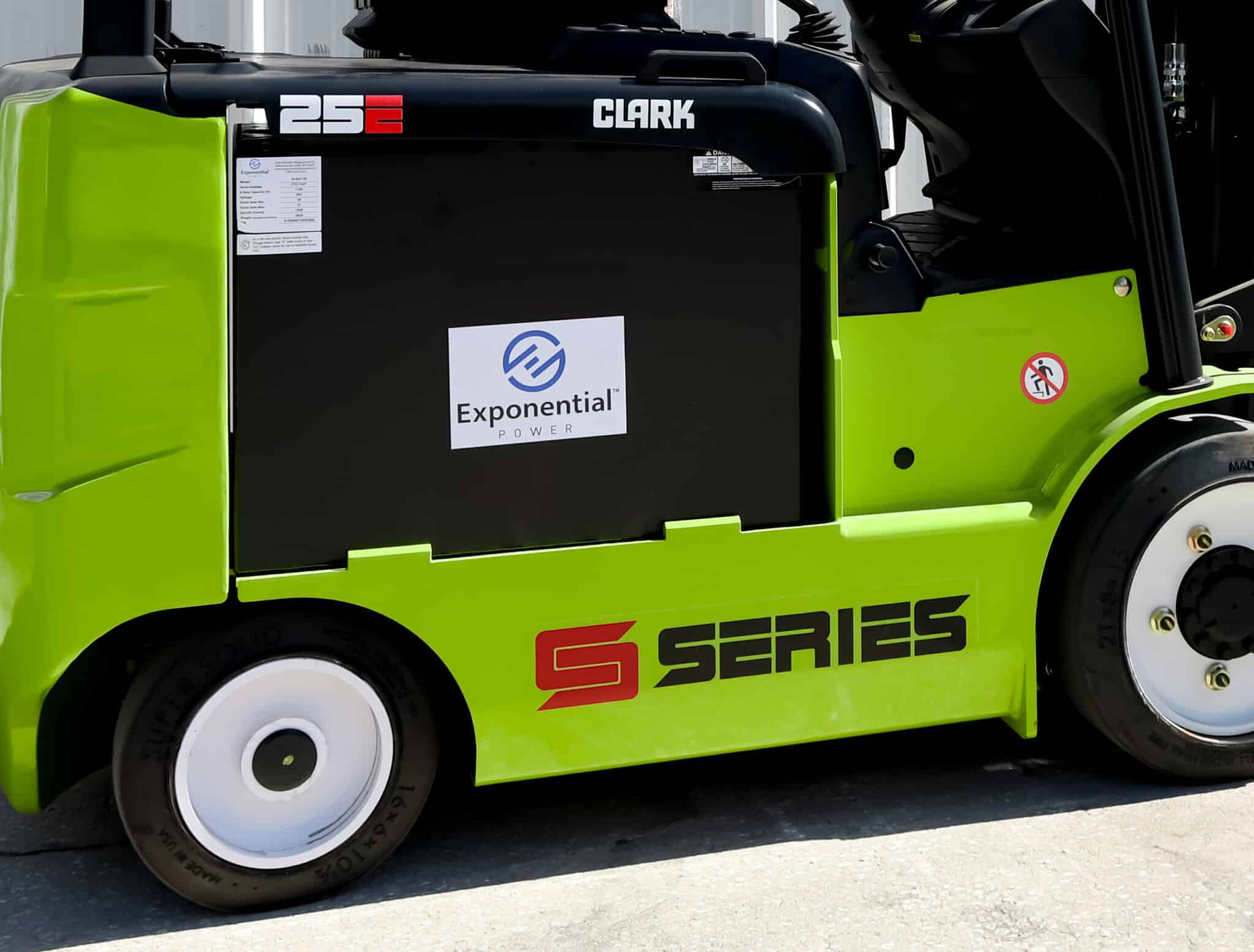SEPTEMBER 2025
Buyer’s Guide to Forklift Batteries:
How to Choose Between Lithium and Lead Acid
Two popular battery options, one important choice to make.
Choosing the right battery technology for your forklift fleet can have a major impact on your operation’s efficiency, maintenance costs, and long-term performance.
While lead-acid batteries have been the industry standard for decades, lithium-ion batteries are quickly gaining ground thanks to their advanced features and lower total cost of ownership over time.
So, what’s the difference between them and which option is right for you?
Lead-Acid Batteries
Lead-acid batteries have long been popular in industrial and commercial applications due to their low upfront cost. They are widely available, and most operators are familiar with how to maintain and operate them.
For facilities with light to moderate usage, they can still be a dependable choice. In multi-shift operations, these batteries can be swapped out for freshly charged ones, keeping equipment running.
However, lead-acid batteries come with several drawbacks. They require ongoing maintenance, including regular watering and cleaning. Charging is time-intensive, typically taking eight hours plus cooling time.
As the battery discharges, performance tends to decline, which can affect productivity. Their lifespan is also limited, often needing replacement every few years. Additionally, they require a designated charging area with proper ventilation to handle gas emissions during charging.
Lithium-Ion Batteries: The Future-Proof Upgrade

Lithium batteries are a more technologically advanced alternative to traditional lead-acid batteries that are safer, more efficient and provide an excellent return on investment.
They charge much faster than lead-acid, often within two to three hours, and support opportunity charging to maximize uptime. Unlike lead-acid batteries, they don’t require watering or routine maintenance, which reduces labor and safety concerns. Performance remains steady throughout the charge cycle, and their longer lifespan means fewer replacements and lower costs over time.
Additionally, lithium batteries take up less space and do not require special charging rooms, freeing up valuable square footage. Although the initial investment is higher, these costs are quickly offset.
Building on these advantages, the CLARK Fusion Lithium Battery is an exciting breakthrough in forklift battery technology. Fully integrated and optimized at the factory on select trucks, this genuine system requires no conversion kits or third-party equipment. Not only that, but these batteries are proven to deliver over 50 percent in lifecycle savings when compared with lead-acid batteries. When it comes to forklift batteries, CLARK Fusion Lithium is hard to beat.
Which is Right for You?
If your operation runs multiple shifts, prioritizes uptime, and wants to reduce maintenance overhead, lithium-ion is an excellent long-term investment. On the other hand, if your total forklift usage is light and you have budget constraints, lead-acid batteries may still be worth considering.
Keep in mind that we offer financing, so if budget is your only concern we can certainly help.
Our Recommendation
If your initial budget supports it, we highly recommend choosing a Lithium-Ion battery due to its short and long term advantages. If you’d like help choosing the right forklift and battery solution for your operation, reach out to our team at (407) 859-8750.
We’re here to help you compare your options and make the best decision for your bottom line.
Quick Recap: Lithium vs. Lead Acid Batteries
LITHIUM-ION
LEAD-ACID
Pros:
• Faster charging times, often in just 1 to 2 hours
• No maintenance required (no watering, no acid)
• Supports opportunity charging during breaks
• Consistent performance throughout the charge cycle
• Longer battery lifespan, leading to fewer replacements
• Smaller footprint with no need for separate charging rooms
• Higher energy efficiency, reducing electricity costs over time
Cons:
• Higher initial cost compared to lead-acid
• Requires dedicated chargers and proper infrastructure
Pros:
• Lower initial cost compared to lithium-ion
• Widespread availability and familiar technology
• Suitable for low to moderate usage applications
• Can be swapped out with spare batteries for multi-shift operations
Cons:
• Requires regular maintenance, including watering and cleaning
• Long charge times (typically 8 hours plus cooling)
• Performance drops as battery discharges
• Shorter lifespan, often requiring replacement every few years
• Requires dedicated charging space with ventilation
Have more questions? Contact us today for assistance.
